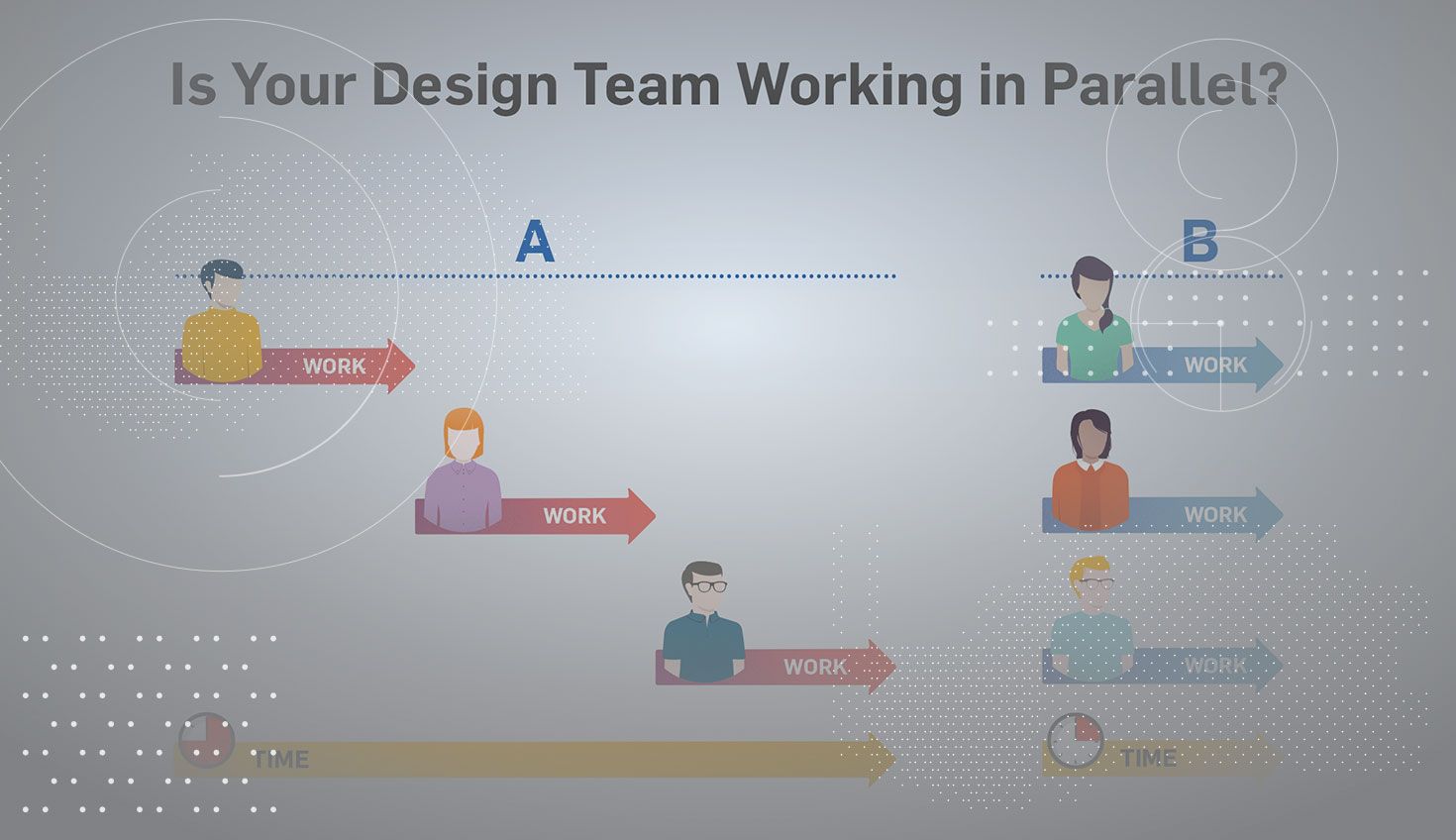
5:34
Whenever I visit engineers and designers, the one piece of feedback I repeatedly hear is that companies want more speed and innovation in their product development cycle. According to the Boston Consulting Group, which releases an annual Global Innovation Survey, speed-to-market impacts a company’s bottom line in the following ways:
- Faster Innovation – Companies that are built for speed often realize first-mover advantages; they are able to react more quickly to competitors’ moves or market shifts with their own product innovations.
- Lower Development Costs –Streamlined processes, limited iterations, and reduced slack release financial and operating resources for other value-adding activities.
- Larger Market Share – A product that gets to market early is less likely to face initial competition. A quick introduction also gives a product more time to build market share before it declines into a commodity.
- Greater Forecasting Accuracy – Because the time between product design and product release is shorter, executives may be more willing to green-light trendy products that would otherwise be denied.
In a recent study of large enterprise companies by the Aberdeen Group, the need to speed up product design and manufacturing was also identified as the number one competitive pressure:
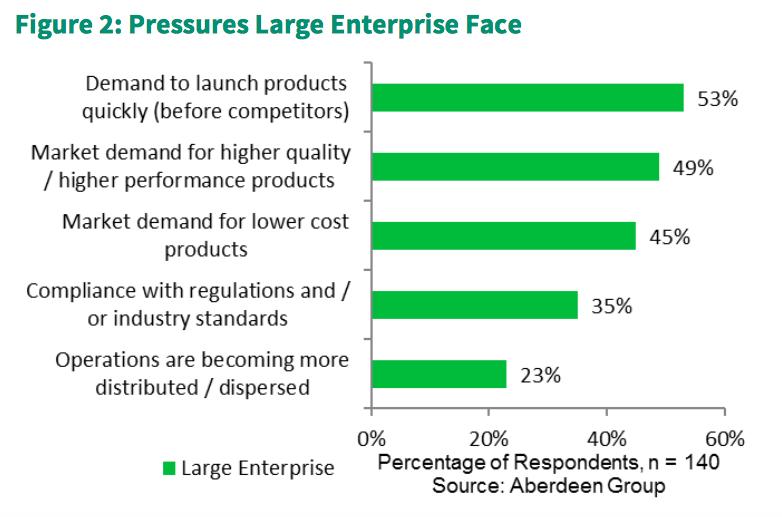
Sure, more speed and innovation is on every executive’s wish list, but you can’t just buy those things off the shelf. To realize those goals, many forward-thinking companies are recognizing that traditional waterfall and stage gate processes just don’t cut it in today’s world. To get the speed and innovation they crave, they are moving to a completely different process: Agile Product Design.
Introducing The Agile Product Design Process
Agile Product Design is a new approach to build products faster and with more innovation – strongly emphasizing rapid iteration, tight communication between a geographically diverse team, and an openness to embracing change.
The idea of Agile Development has already been widely adopted with great success in the software world. Favoring “responding to change over following a plan,” the approach breaks down software development into short review cycles or “sprints,” with incremental product improvements being delivered at the end. Agile Software Development is a collaborative process, using customer feedback to determine the next set of tasks.
These same principles work splendidly in the design and manufacturing world. Here’s a glimpse at how Agile Product Design differs from traditional design processes:
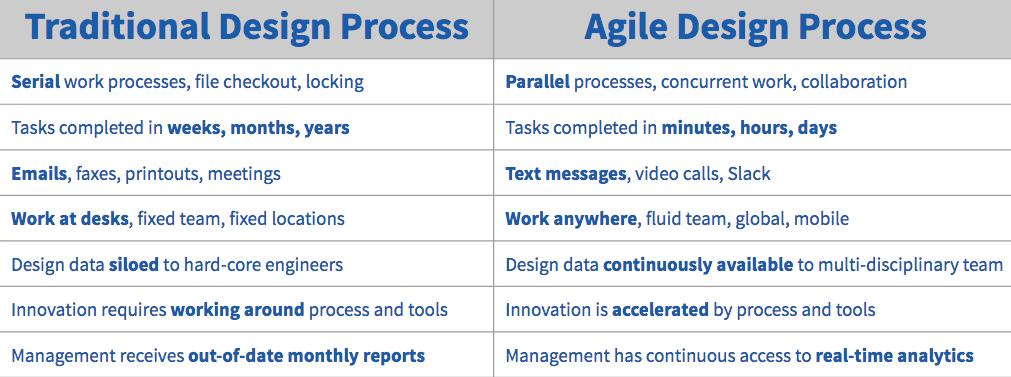
Take a quick look at the picture at the top of this blog. Does your design team most resemble Team A, which works serially (one person at a time), or Team B, which works in parallel (multiple people at the same time)?
Does your company have the flexibility to instantly add new CAD users as you scale up a project, or are you forced to wait days or weeks to get new CAD licenses, provision new computers and install the software? And even then, are you always dealing with the different CAD software versions problem?
Can your designers and engineers only work at one computer where the software is installed or are they able to login and access their CAD system and CAD data in the cloud from any computer or mobile device?
Traditional File-Based CAD & PDM Are Anti-Agile
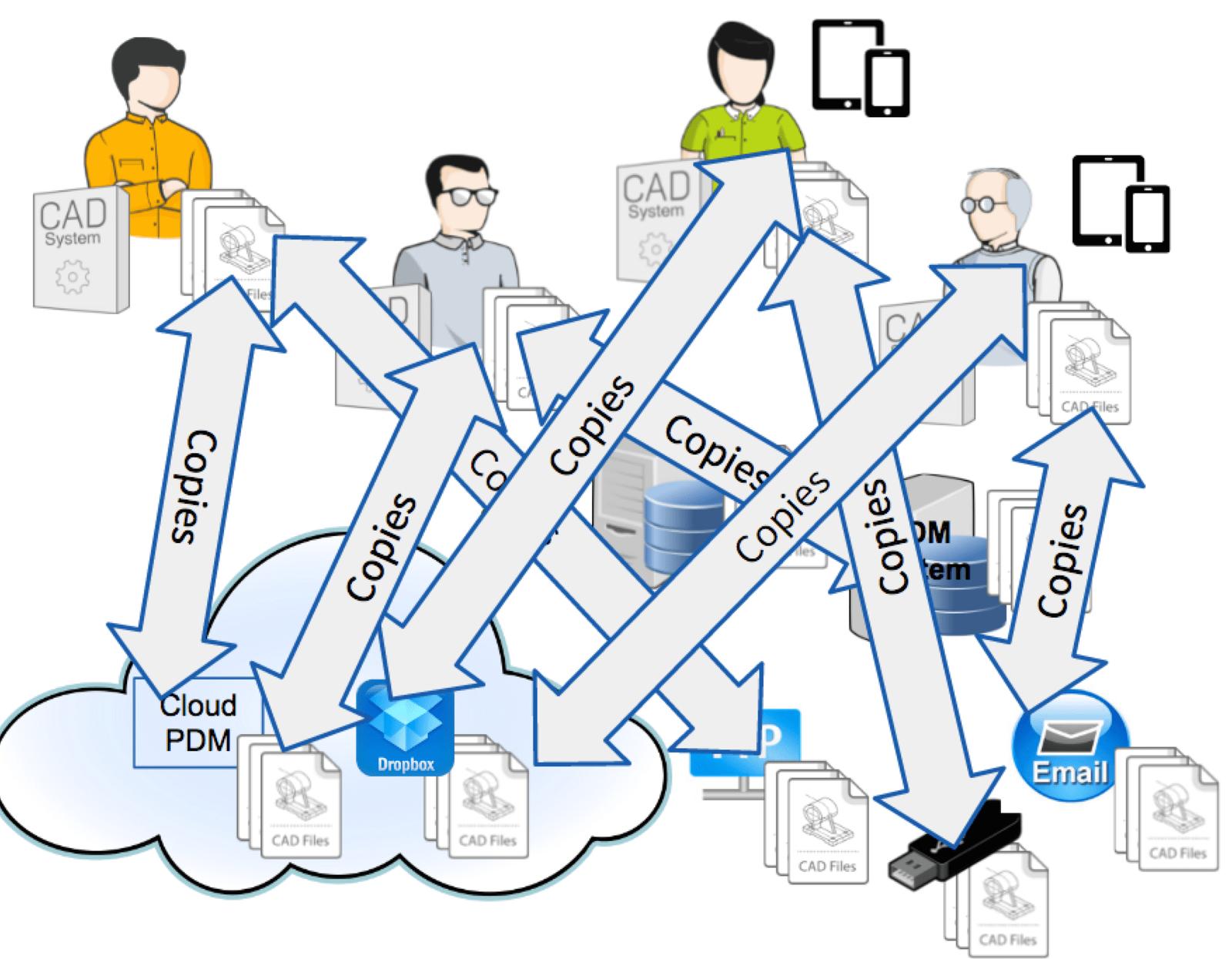
The fact is, traditional installed file-based CAD was never built for teams. It forces your team to work serially: People need to wait for a colleague to finish their task before they can make a single tweak. Inertia is the enemy of speed.
Even more frustrating is all the chaos and confusion surrounding CAD file copies. Undermining the Agile Design process, traditional CAD makes you worry about:
- The danger of you accidentally overwriting your colleague’s work
- The danger of your colleagues overwriting your work
- Wondering which file is the latest version of a design
Should you happen to manage your files with a cumbersome Product Data Management (PDM) system, you have additional headaches with file checkouts, file check-ins, syncing, etc. It can drive you to madness. Agile teams also cannot afford to wait weeks or months to provision PDM servers. They can’t wait days or even hours to see what each other is doing. Designers I visit say the same thing over and over: “We just don’t have time for this anymore!”
When you spend more time managing files and less time designing, innovation is less likely to materialize. You can’t squeeze creativity in at the last minute or treat it like an afterthought.
For all their strengths, traditional file-based CAD and PDM slow you down too much when you try to use an Agile Design process. They are anti-agile. Seeing this happen over and over again during our customer visits was one of the primary reasons motivating us to build a brand new CAD system from scratch.
Agile Designers Need a New Generation of CAD
Onshape is the only CAD system with a full-cloud database architecture, which makes it perfect for Agile Product Design. Your CAD system and CAD data live in one central place in the cloud. Everyone is always automatically on the same software version of Onshape – the latest one – because everyone is using the same single master instance of the CAD system. With no hassles over downloads or installs, no confusion over file copies, and no more lost work from computer crashes, full-cloud CAD is perfect for teams.
Over the next few weeks, I’ll be taking a deeper dive exploring how full-cloud CAD can immediately help your Agile Product Design team in the following ways:
- Real-Time Deployment and Access – Design teams are constantly changing with new employees and contractors being added (and removed) all the time. Onshape instantly provides secure access to CAD and data management to everyone on a team, everywhere, on every one of their devices. No clients or servers to install. No waiting to get started. And when you remove someone from the team, you can instantly de-provision them. No lingering ‘offline’ copies.
- Real-Time Data Management – With Onshape, any design change made by anyone anywhere is instantly reflected to everyone everywhere – without the need for separate PDM servers, copies, syncing, etc. Unique simultaneous editing means no worries about overwriting each other’s changes or finding the latest version.
- Real-Time Analytics & Controls – Management and executives get real-time access on any of their devices to comprehensive up-to-the-second data about their product design process (right down to the granularity of a dimension change or rounded edge). It’s the information and controls they need to make real-time decisions in the fast-moving Agile Design process.
So stay tuned to this blog – and if you’d like to share how your company is becoming more agile, please drop us a line at success (at) onshape (dot) com.
Latest Content

- Case Study
- Robotics
Saga Robotics: Powering the Future of Sustainable Farming with Cloud-Native Onshape
01.05.2026 learn more

- Blog
- News from Onshape @ PTC
Onshape at CES 2026: Where Innovation Meets the Show Floor
01.05.2026 learn more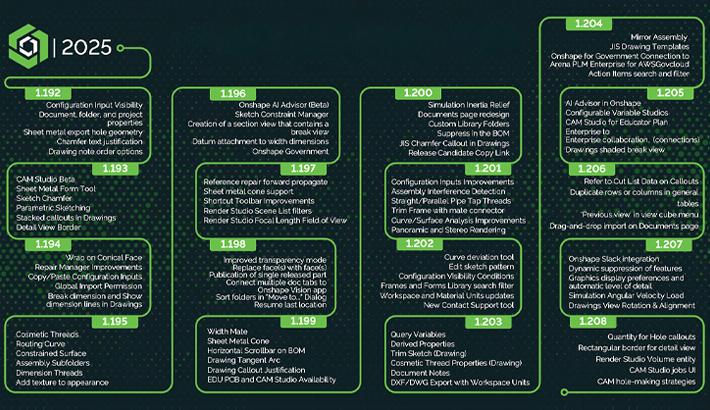
- Blog
- News from Onshape @ PTC
Onshape’s Top 10 Best and Newest CAD Design Software Features of 2025
12.23.2025 learn more



